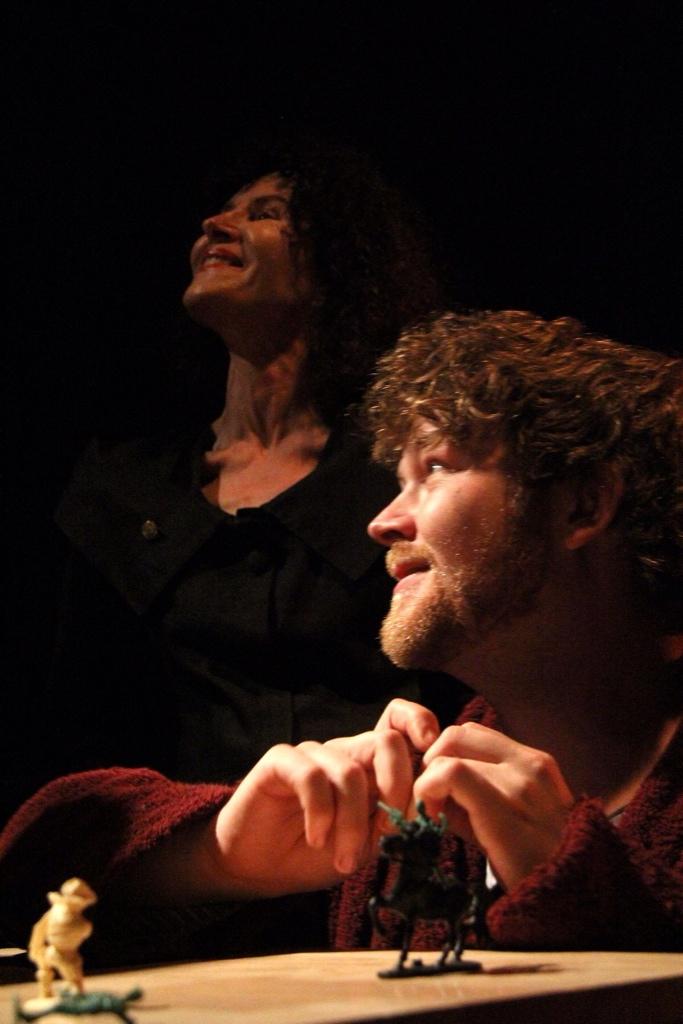The
Massacre at Paris is one of Christopher Marlow’s most
known plays amongst Faustus and Tamburlaines.
Once again we face the conundrum of a 400 year old neglected play that has been hidden away from wider audiences.
This
year celebrates the 450th
anniversary of Marlow’s birth and it’s a pity that not enough theatregoers have
been exposed to The Massacre at Paris as it has undoubtedly played a
massive part in the history of theatre, film and directors today. However the Rose Playhouse and The
Dolphin’s Back theatre company have come to the rescue; they have created two
productions of The Massacre this year both directed by theatre virtuoso
James Wallace, staged like it was back then in 1593, where The Massacre premiered.
As the title suggests there are a lot of murders; eighteen staged murders to be precise. Without saying too much, The Massacre refers to St Bartholomew’s Day when thousands of protestant Huguenots (men, women and children) were brutally killed across France. Marguerite, played briefly by Ella Road, the daughter of the Queen Mother of France (Kristin Milward) married the Protestant Henry de Navarre (Rhys Bevan) and from then, hell broke loose. Up to 3,000 people were slaughtered in Paris alone, which was, arguably, orchestrated by the zealous and tyrannical Duke of Guise (John Gregor).
As the title suggests there are a lot of murders; eighteen staged murders to be precise. Without saying too much, The Massacre refers to St Bartholomew’s Day when thousands of protestant Huguenots (men, women and children) were brutally killed across France. Marguerite, played briefly by Ella Road, the daughter of the Queen Mother of France (Kristin Milward) married the Protestant Henry de Navarre (Rhys Bevan) and from then, hell broke loose. Up to 3,000 people were slaughtered in Paris alone, which was, arguably, orchestrated by the zealous and tyrannical Duke of Guise (John Gregor).
Elizabethan
plays have their charm in eliciting witty poetry however some of these
flourishings were beaten up in The Massacre by bad exit lines with the
stereotypical, and dramatic, ‘I die’ lines, which was nicely achieved by Beth
Eyre. Due to the number of characters – up to forty- which, the actors and
actresses had to play, it’s a bit of a memory job having to keep up with whose
playing who yet the psychological thriller and slasher-type performance is easy on the mark; the audience do not need to know the finer details of the
plot to understand what’s going on.
 |
| The Royal mother and Son: Kristin
Milward & James Askill |
Fake
blood, paint, ink or any form of liquid is devoid on the Rose’s stage; yet it is
just as effectively spilled through
plenty of red, yellow and white confetti - it never runs out. I had the
privilege of being showered by red confetti, myself, when a baby –made out of
cloth- was slashed in Ella Road’s arms.
Kristin
Milward bestowed an evil queen and she made this apparent from the outset with her husky voice and Cruella De Vil
demeanour. David Meunier-Palmer’s
coordination of light is an important element to this production as used in the
Duke of Guise’s dark monologue. John Gregor owns the stage at this point
swinging his golden cross medallion whilst repetitively sneering the word
‘religion.’ When he depicts violence or self-pity, by parallelling Guise with
Julius Caesar, he retains a sense of malice, which continually surges in his
gripping, yet obnoxious character.
 |
| John Gregor as the Duke of Guise |
James
Askill and Rhys Bevan were recently in
the Rose’s production of The Woman in the Moon, also directed by James
Wallace, which was welcoming to see. Askill
retained the humour he had as a shepherd, from the previous play, yet his
moments as the stern and royal Henry III were riveting and hair-raising. He seemed
comfortable with Marlow’s text and knew when to drop the comedy. Bevan, on the
other hand, had less dialogue as the King of Navarre yet, I felt,
his words had little conviction; this king seemed, almost, clueless and indifferent
about the massacre where there should have been inklings of remorse.
Overall,
all cast members did a brilliant job of handling this multidimensional and
wordy play. With screaming, bodies being dragged on the floor and a
shocking scene where we watch a cardinal get strangled to death in a space of a minute, I'd say,
it’s definitely worth a look into if you haven't seen the The Massacre before. Don't be surprised when you hear Tarantinoesque music playing in the background as it fits in too well with the frantic mob and confetti bloodbath scenery. Midway through the play Guise stamps on a dummy head twenty times; but don't be put off - I found it rather funny, even if it wasn't meant to be.
| Slasher movie? No, it's Christopher Marlow's Massacre at Paris |






No comments:
Post a Comment